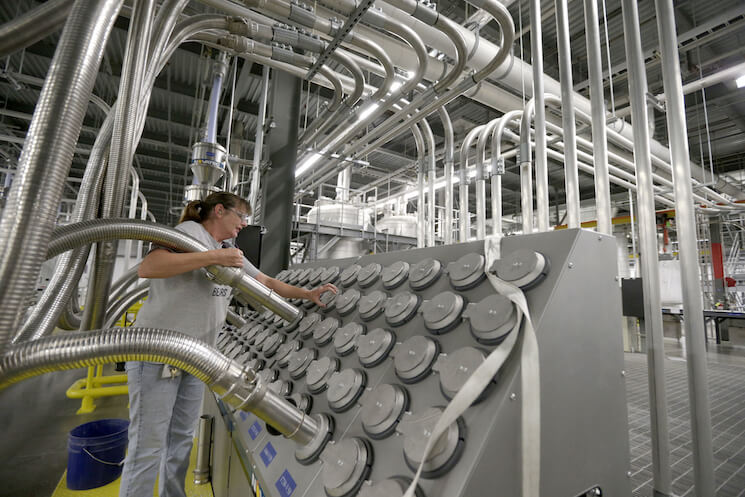In the United States 24% of nonfarm workers were manufacturing workers in 1971.
It’s 8.6% today.
Maybe it would be 9% if NAFTA has not been negotiated and if China had not joined the WTO, but maybe it would still be 8.6%–analysts disagree on trade expansion vs. trade diversion here.
Maybe it would be 12% if the United States had followed Japan’s and Germany’s roads of being high-savings low-currency value countries focused on nurturing their communities of engineering excellence, rather than running the Reagan and Bush 43 deficits and combining that with a focus on financialization and a strong-dollar policy. I certainly think that would have been a better policy road for the United States. But it gets you only to 12% at most–not back to 24%.
The fall from 24% to 12% is the technological tide: increasing labor productivity in manufacturing, large but not infinitely elastic demand for manufactured goods.
Looking forward we can say that by 2060 manufacturing in the United States is likely to be 6% of production workers, in which case whatever you think of what the most important parts of the value chain are, tuning the location of manufacturing labor–the people watching the robots and swapping them out when they go bad and break–is unlikely to be an important part. The thing that had been a major driver of growth in employment worldwide for two centuries–since the cotton masters of Lancashire realized the first automatic spinning machines needed a lot of labor to watch and maintain them because they were fragile–will no longer be salient in our economies. Gone with it for EMs will be the road to development that used labor cost advantage to find a niche making basic manufactures and a national champion firm that could export into that niche, and then relying on learning by doing and osmotic technology transfer to carry you forward. For today’s EMs that are not already well along the road: Strait is the gait. Narrow is the way. Many are called, but few are chosen.
As Pascal Lamy said last week: “There is supposed to be an old Chinese proverb: ‘When the wise man points at the moon, the fool looks at the finger’. Market capitalism is the moon. Globalization is the finger.”
The problems of market capitalism are broad and deep. They are not solved–they are not event addressed–by trade wars, by “renegotiating” NAFTA, by (falsely today) labeling China as a currency manipulator.
And Trump’s core supporters will not be happy if his trade policies sharply raise the prices of the goods they buy at Walmart.

